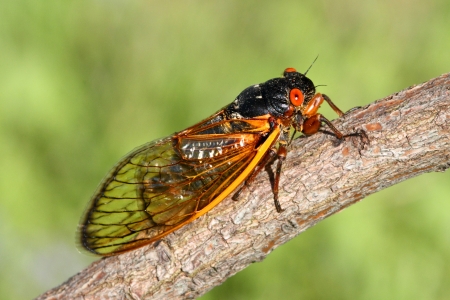Insects may be generally easy to ignore, but how many different insect species do you really see within an average day, or week, or year? Most of the insects that people encounter in America are common yard or house-bugs. In fact, as far as many Americans are concerned, the most off-putting and exotic insects that exist can probably be found in some place like Australia. The climate in America is too temperate to allow for a shocking degree of insect diversity. Although the US is not the most diverse region of the world as far as flora and fauna go, even the most commonplace insects in America can be quite fascinating when viewed up-close. For example, if you have ever looked closely at the wings of a dragonfly, or even a housefly, you may have noticed an intricate pattern of veins. These vein patterns clearly vary in appearance from insect-to-insect, in much the same way that human fingerprints vary from person-to-person. One recent study has shed some light on how these patterns are formed.
Almost all insect wings feature veins that are visible to the human eye. The vein patterns on some wings are relatively simple, while other insect wings feature complicated geometric designs. For example, the wings of a fruit fly only feature a few primary veins, but dragonfly wings feature both primary and secondary veins. Secondary veins are numerous enough to create many small geometric shapes. Secondary vein patterns vary endlessly between different insect species; even each wing of one insect features vein patterns that are asymmetrical. Since this variance has been discovered, scientists have attempted to catalog different wing-vein patterns in accordance with particular insect species. However, creating a reliable index of different species by wing-vein design has, so far, been an impractical undertaking.
Luckily for those curious, current researchers can now catalog the tremendous, yet often subtle variance between different insect wing-vein designs by programming computer software to do all of the hard work. By allowing computer imaging technology to analyze different wing designs through advanced algorithms, insect species can likely be discerned and catalogued into a database. This database could identify a species by the vein patterns on insect wings. This technology can also be used to study how the veins in insect wings develop through different life stages.
Do you think that this technology could also be applied to the formation of veins within leaves and other products of the natural environment?

